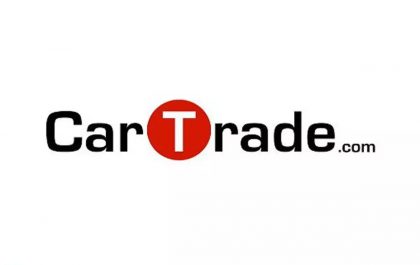Marketing and UX design have a lot in common. You have to consider the perspective of the user/customer and create material and systems based on it. However, UX and marketing aren’t just similar; they’re compatible. A good UX feeds into good marketing, and vice versa.
Understanding how these two subjects relate can help turn good marketing into great marketing, improving retention, conversion, and ROI.
UX exists in many different fields, from the ROI of Enterprise UX to UI and the usual UX for apps and websites. It is almost a requirement to survive in today’s market because customer standards have changed to reflect their higher expectations regarding website and app performance.
While UX design in marketing is still a relatively new field that changes quite often, there’s no doubt that it will continue for many years and become an integral part of design technology.
Table of Contents
Why You Need Good UX
Customers set the bar high for apps and websites nowadays. They leave for your competitors if your offerings are hard to navigate or unintuitive. And that’s why good UX is essential for today’s market.
A good UX will lead customers through the app or website to find what they need quickly, easily, and most importantly, without frustration.
It consists of correctly sized and placed buttons, neatly organized menus that help them find what they’re looking for, and pages that give the information customers need and nothing more. Customers need to see and access the information effortlessly.
For example, over half of all online traffic comes from mobile devices. However, many websites still don’t have an optimized mobile site for mobile users. Good UX dictates that you should optimize your website for both types of traffic. Encouraging users to use both means that more users can get to your site, increasing overall traffic.
Design-oriented companies typically outperform the rest of the stock market by 228%. It just shows how important UX and design are in a technology-oriented world.
UX and Marketing: What They Gain From Each Other
UX is about designing systems. Marketing is about designing and placing content. When you use UX design in marketing, you get effective marketing strategies that keep customers coming back for more.
UX keeps systems effective, easy, and simple, and marketing should follow this pattern. Blending the two is easier than you think.
It can give insight into interesting facts relating to the industry on a loading screen or a banner underneath a product that lists frequently bought products with the product in question. Little things like that can make a big difference in ROI.
Blogs are an excellent example of this. Content marketing generates three times as many leads as outbound marketing but costs 62% less. However, that’s only if you effectively blend UX and marketing.
Inbound links are a great way to reduce bounce, so when planning future content, you must plan on any inbound linked resources. You should be planning far ahead with your content marketing to reduce bounce and effectively reuse older material in the same stroke.
How To Think Like A Designer: Applying UX Practices in Marketing
UX has some basic principles to follow to keep the system clean and easy for everyone to use, and while some of it is basic common sense, other elements can be a bit more obtuse and require some thought.
On Brand: Keeping Things Cohesive
You have surely heard this before, right? Well, it applies to UX as well. However, whereas marketing is more about keeping material on brand, with systems, it’s about keeping things simple.
Users don’t want a drop-down menu with dozens of different pages to parse through. They want simple and easy pages that lead them through their customer journey. They always know where they are in the process and can easily find their way around the system, no matter what they need.
Also, strive to keep things personable. Humans don’t like interacting with a corporate machine. They like interacting with a friend or another human. Marketing comes into play at this juncture, as what the user sees and how they feel helps with advertising and conversion.
Setting it Straight: Easy, Breezy Navigation
Earlier, we mentioned that users don’t want to struggle to find out where they need to go. And that’s true. Users want to be able to find what they need within a matter of seconds. Keeping the organizational structure simple and reducing the size of the system are both integral parts of good UX.
The navigation should naturally lead users to where they want to go and tell them what they want to know. Marketing is no different, as you need to show customers what they want when they want it.
As users follow the customer journey, they should have the utmost convenience, leading to conversion and profits.
Get In, Get Out, Get It Done
Users don’t want to waste time. They want to do what they must, find what they need, and then get on with their lives. If you’re leading customers to buy something, it should take around five to ten clicks, and preferably on the lower end of that spectrum.
Putting few barriers between the customers and what they want makes converting them an easy, natural process. Another critical aspect is not cluttering screens with unneeded elements, as it’s typically discouraging and annoying to customers.
Keep things like banners, pop-ups, and ads to a minimum, so customers don’t struggle through the noise to find what they want. Knowing how much is enough is an essential aspect of design, no matter what field you are in.
Research and Competitor Analysis: Important to Both UX and Marketing
Before you get gung-ho and decide to apply UX principles to marketing (or make suggestions to the design team), you need to understand their basis. Do your research, lots and lots of research. You shouldn’t start designing your ideal interface or marketing campaign before you do your research.
UX tends to collect data on how users interact with the system. Improvements use that input. Put that information on the homepage. Are users leaving the homepage quickly to get to another screen? Are users having a hard time navigating a menu? Change the menu layout, or change the size of the buttons.
Marketing is similar in that copious research must be done for any project to work effectively. Gather feedback from customers, conduct surveys and interviews, and generally understand how the customers behave with your systems and materials. It can lead to surprising discoveries and give you an edge on the competition.
Speaking of competitors, you’ll want to research them too. Find what they do right, what they do wrong, what value they give the customers, and most importantly, what you can provide customers with that they don’t.
Cornering markets your competitors forget to look out for gives you an edge in the market and boosts customer loyalty from that faction.
Trends: The Beating Heart of UX And Marketing
Technology is continually evolving and ever-changing, and both UX and marketing rely heavily on technology. Technology also means trends. Trends sweep through the market, and customers follow them.
Marketing has to reflect different mediums and can use various means to reach customers.
And in UX, trends tend to come in the form of enhancements and technological improvements. For example, AI and machine learning are huge trends in the UX field right now, particularly in the form of chatbots and personalized advertisements.
The trend feeds into marketing, where personalized advertisements can go a step deeper and encourage customers to return to a website or item they looked at before.
The future is evolving as you’re reading this, and many enhancements in the UX and marketing fields are sure to happen. Staying on the cutting edge of these trends helps give you a leg up in both areas.
Marketing and UX: Two Pages on a Website
Marketing and UX should flow together, as they are ultimately intertwined. A good UX keeps customers happy and satisfied, while good marketing draws them in and keeps them there.
The UX design in marketing principles of keeping the focus on the user and their journey through the application should mirror the customer journey created through marketing.
Check user profiles, pain points, and improvements that can be made through the system to keep the customer moving smoothly.
Personalization is another big trend in both the UX and marketing circles right now, and 74% of customers feel frustrated if there isn’t some level of personalization within websites and apps.
Personalization can be as simple as personalized ads, a chatbot the customer can speak with, or an account that allows them to create their preferences on websites (if you want to impress).
Use Good UX to Improve Marketing
As you can see, UX and marketing are two vital components that integrate to create something more. Investing in design, both in UX and marketing, brings ROI up and brings in customers, and more importantly, keeps them with you.
Good UX impresses customers, while good marketing helps that UX feel more alive. Using the two together is a potent combination that will bring rich returns.
Related posts
Featured Posts
A Music Lover’s Guide to the Prague Spring Music Festival
The Prague Spring Music Festival is a testament to the enduring power of music to unite, inspire, and uplift. From…
Car Trade Tech IPO Date, Price, GMP, Review, & Details
Car Trade Car Trade brought in a total of Rs 281.52 billion, Rs 318.44 billion, and Rs 266.80 billion for…



